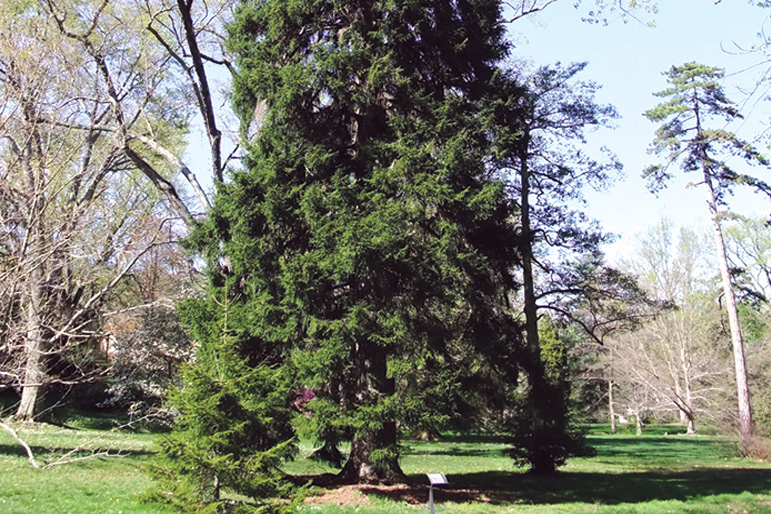
Pennsylvania (Penn’s Woods) is aptly named for its abundant forests. According to the DCNR (Department of Conservation and Natural Resources) forested land makes up 2.2 million acres, or 58%, of the Commonwealth. Originally boreal, or cold-adapted forests, by the end of the ice age they had gradually evolved into hardwood forests that would thrive in a temperate climate.
Trees suck carbon dioxide out of the air as they grow, helping to slow the impact of climate change. If forests become stressed or begin to die off, they'll remove less carbon — or even send it pouring back into the atmosphere — potentially speeding up global warming. (Scientific American. November 28, 2019) Trees sequester carbon in their tissues through the process of photosynthesis. The fungi and bacteria in the rhizosphere (soil) that connects the trees to each other also sequester tons of carbon.
Phenology is the study of periodic plant and animal life cycle events and how these are influenced by seasonal and interannual variations in climate, as well as by habitat factors (such as elevation). Temperature is the main driver in the phenology of our forests. Tree buds react to temperature by swelling, leafing out, flowering, fruiting, and going dormant. There has been an almost 2˚F increase in overall temperatures since the mid-20th century. It is estimated that there will be a 1.3% increase in winter temperatures per decade in the 21st century.
As climate changes, so will tree species, shifting north and to higher elevations. American beech, sugar maple, and yellow birch are being affected; white, black, chestnut and scarlet oaks, and hickories, are adapting. Of course, the effects of climate change are complex. Rainfall is increasing in our state, unfortunately tending to be in extreme downpours. Fragmentation of forested land by the built infrastructure and increased deer browse is affecting forest regeneration. Invasive species fill in the forest voids, preventing reestablishment of native species. Introduced insects like the woolly adelgid are depleting our state tree, the hemlock. Emerald ash borer is systematically killing all the ash trees in the state, except the small percentage that property owners invest to protect.
DCNR recognizes that they cannot continue to manage our forests by restoring them to some former state. A new conservation paradigm is in place — one that copes with the profound changes using progressive strategies.
In our community forests, we are seeing changes to once-dependable trees — like the Colorado blue spruce and the Douglas fir — that were planted in the mid-20th century. Needle blights and scale insects are causing needle loss and decline. One of the most magnificent pines, the Austrian pine, has been hammered by Diplodia tip blight. The best-performing evergreen today is the West Coast arborvitae, especially the variety “Green Giant.”
But when we go all-in on one species, problems develop. We are so blessed to have arboreta and college campuses like the Morris Arboretum, Haverford College, and Swarthmore College, where we can observe a wide diversity of trees that perform in the Delaware Valley. My personal favorites are the firs: Nordmann, needle, and Greek firs perform very well here. Norway spruce also continues to perform here, but I have a special affinity for the tall, graceful Oriental spruce. The Chinese hemlock grows well here, especially in shade, and has no insect problems. These trees behave well, too: they are not invasive. Finally, we have been planting native species from the Southern Appalachia forests, including silverbell, sourwood, willow oak, yellow buckeye, and American linden.
Planting trees that perform pays dividends as the trees grow and do their thing with carbon storage and providing habitat in our community forests. The simple pleasure of planting trees and watching them grow is a demonstration of our belief in the future of this wonderfully mixed-up world.

When heavy winds blow, major limbs — and sometimes entire trees — fall. The primary reason for this is poor structure, which results...

In the past 10 years, several significant pest and disease issues have become so common that we deal with them every day. Here...

Beech Leaf Disease (BLD) is emerging as the biggest threat to our trees since Emerald Ash Borer.
As we have communicated over the past...